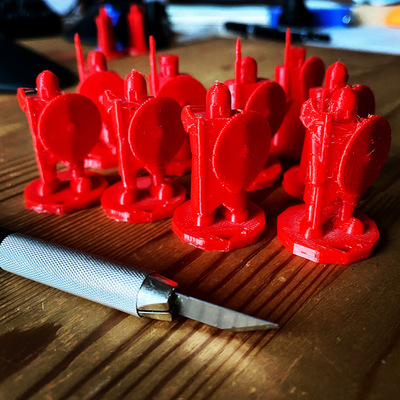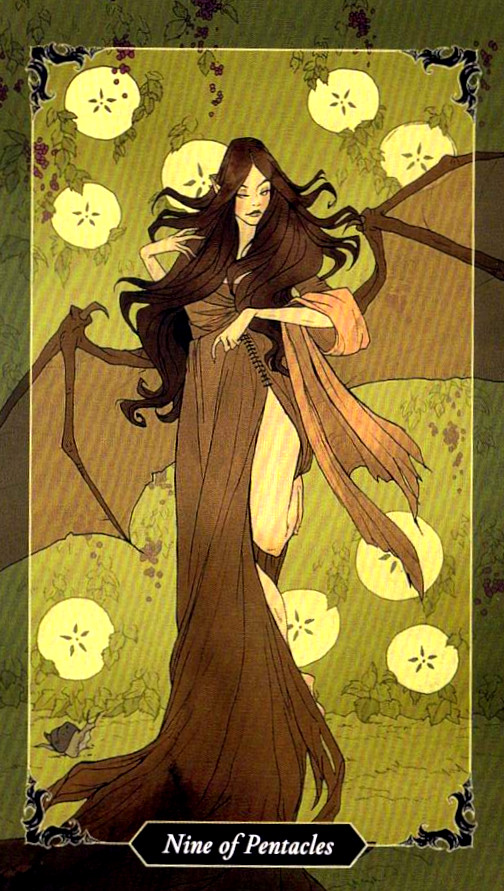
|
Eow Links 69 |
| 2022-04-24 |
Eow Links 69

"Eow" for End Of Week. TTRPG Links I gathered during the week. This is iteration 69.
For more weekly links, head to The Seed of Worlds Shiny TTRPG link collection. For monthly links, look at The Glatisant.
Most of the links below are found via the RPG Planet that Alex Schroeder built and maintains. If you have an RPG blog, please consider joining the conversation.
My favourite for this week is Drawbacks with, and alternatives to, the plotted side quest system, "Instead, what I do now is maps. Maps, maps, maps."
Grounding Magic in Your Game World
This post was intended as a scattered bunch of individual spell ideas, but I can’t help seeing some principles common to them. They require players to tailor spells to the environment they have to work with, or alternatively equip their characters with appropriate objects to use in a scenario.
It’s far too easy for me to get stuck in an anxiety loop: Sit down to design a dungeon and feel anxious that the adventure will turn out crap. Start to worry about the design, the overall purpose of the dungeon, what might logically live there. Spin my wheels with various non-productive actions until I finally give up.
About Artifacts, Deceptions and Dilemmas
Despite the acronym, AD&D is a book for DMs/GMs/Referees running any old-school or OSR-adjacent game. Game rules and statistics are barely present, if at all, as the focus of the book is on dungeon design and adjudication.
Wizards of the Coast Fucks Over Hungarian D&D Licensee and Treats D&D Fans Like Crap
how Wizards of the Coast screwed the small publisher responsible for D&D 5e's Hungarian translation, and in turn our small but enthusiastic D&D fandom.
Rules vs vigorous creative agreement by Vincent Baker, argues that rules should bring the unwelcome to the play, the things the participants would not have created by mutual agreement and consensus.
Thoughts on new Spelljammer announcement
Nice to see those old friends - the aesthetic has been retained with instantly recognisable Hammership, Damselfly and Man-o-War appearing alongside revised Nautiloids (plus a variant?) and something we had a top-down angle on so unknown.
Fireside Friday, April 22, 2022
You can see much the same in the organization of medieval ‘lances,’ – units formed around a single knight. The Burgundian ‘lance’ of the late 1400s was composed of nine men, eight of which were combatants (the knight, a second horsemen, the coustillier, and then six support soldiers, three mounted and three on foot) and one, the page, was fully a non-combatant. A tooth-to-tail ratio of 8:1. That sort of ‘tooth-heavy’ setup is common in pre-industrial armies.
Growing tension mechanic for your game
Get 3d6 and put them in a dice tray where every player can see them. (...). Initiative is rolled and there’s an objective to be met before Terrible Thing (TT) happens. TT is what will increase tension, and what the dice pool represents. At the end of every player’s turn, that player has to grab all dice in the dice tray and roll them. If at least three 6s are rolled, TT happens. Every time a player character does something on their turn that increases the chance of TT happening, add 1d6 to the pool.
A Not-Quite-Review of The Burning Wheel Anthology 2021
And then, one of the jewels of the book: Alternate Artha. This is a much-needed overhaul of the role of traits in the artha economy, revising some of the rules for spending and earning Fate points.
All the products are very accessible and have multiple uses but I particularly love the GM Apprentice Decks because they are never-ending in utility. When I solo play, I use them to draw odds of difficulty, generate NPC names, set up sensory triggers for a scene, or select locations for a scene. I also use them in much the same way at a regular game.
is a reference for tabletop game players and referees who use the randomized dungeoncrawl procedure (often called the 'hazard die' or 'event die') originated by Necropraxis. It is also an introductory work to explain the function of the event die, with respect to earlier paradigms of the dungeoncrawl that involved more stringent turn-keeping and note-taking.
This was inspired by a recent claim I made that there's such a thing as "system-agnostic combat encounter design" that you can and should learn, which many people were resistant to.
I split this into three categories:
Stuff that's interesting about the monsters / Stuff that's interesting about the environment / Stuff that's interesting about the situation
Back to basics: take your Sword and your Backpack, young adventurer
Also periodically, I remind myself to get back to basics. My basics are very simple: Play worlds, not rules. The rules are tools to get the players and me in the mood, to help us paint a picture. And still, the simplest rule of all is: roll a d20.
And I tell you if you need to roll on or over a certain number. Or under. Or between two numbers. Or against my d20.
This also happened to be the first interview I have ever done on my blog and Hankerin Ferinale or Mr. Hank as I have come to refer to him as has been great to communicate with. I also cannot say enough good things about the Shield Wall (the community of ICRPG fans and other Runehammer Games). Everyone has been really welcoming and helpful. There has also been some great off topic conversations and I have met some good people.
The No-Prep Way to Use Character Backstory In a Campaign
The easiest method for pulling a backstory into a D&D game follows the techniques of another type of real-time, collaborative storytelling: improv theater. “The first rule of improvisation is AGREE. Always agree and SAY YES,”
Universal, System-Neutral Stats
My preference is to outsource stats entirely to the system. I accomplish this by comparing whatever needs stats to something diegetic and let the systems do their work. That probably needs some examples to grok.
However, in some ways stopping the game to deal with one specific incident is the easy part: the hard part is taking a good look at the culture which has developed around your ongoing campaign and making the changes that need to be made, even if that ruffles the feathers of long-standing players.
The Art of Chrono War: A Hexcrawl Across Time, Space, and the Multiverse
Sure you've won the battle, but time is multidimensional and nonlinear. The enemy may return to that hex to undo or alter what you've done, or spend their own Chrono Points on adjacent hexes to likewise change the outcomes, and you may need to return, but it should be notably different now. Alternatively, if you left some CP on that hex, you can spend it to start a bidding war to counteract their actions (but remember, they can do likewise to the group).
Drawbacks with, and alternatives to, the plotted side quest system
When I first encountered text adventures as a child, I was smitten by them and I wanted to make them. I first thought that they worked like a choose-your-own-adventure book or a flowchart, like a movie script but with branching paths. And, some did. But I later found out that the best ones instead were based on maps and objects that you could navigate and interact with freely.
